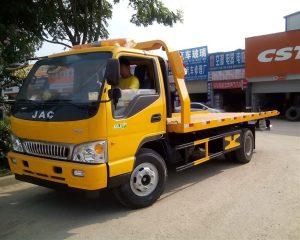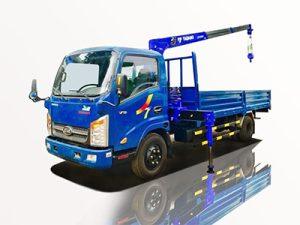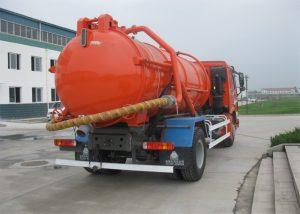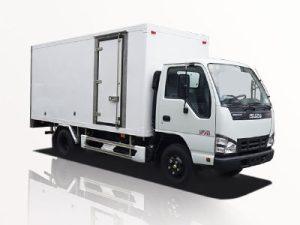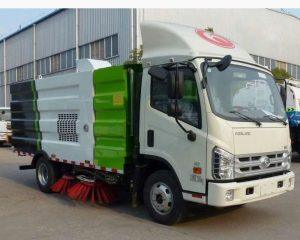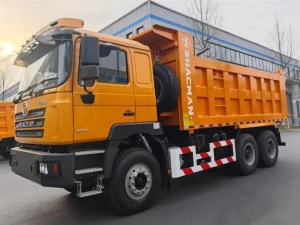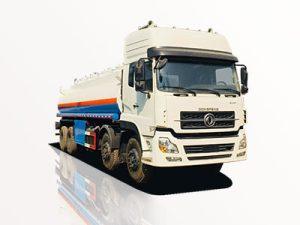Monday to Saturday - 8:00 -17:30
What’s the Difference Between Extended Cab and Crew Cab?
When it comes to choosing a pickup truck, understanding the various cab styles is crucial. The terms “Extended Cab” and “Crew Cab” often come up in discussions about truck sizes, and for good reason. Each style offers distinct advantages suited to different needs. In this article, we’ll explore the differences between extended cab and crew cab options, helping you make an informed decision for your next vehicle purchase.
Understanding Truck Cabs
Before we dive into the specifics of extended and crew cabs, it’s important to understand what a truck cab is. The cab refers to the part of the truck where the driver and passengers sit. The style and size of the cab can greatly influence comfort, space, and overall usability for both passengers and cargo.
Types of Truck Cabs
The two most common types of truck cabs are:
- Extended Cab
- Crew Cab
What is an Extended Cab?
An extended cab is designed with additional seating capacity beyond the standard two-passenger configuration. Typically, extended cabs feature rear seating that is less spacious compared to crew cabs. These cabs usually have two full-size front doors and smaller rear access doors that swing out to allow entry into the back seats.
Pros of Extended Cabs
- Compact Size: Extended cabs are often more compact than crew cabs, making them easier to maneuver.
- Better Bed Space: Because they are shorter, extended cabs typically allow for a larger bed area.
- Cost-Effective: Generally, extended cabs are less expensive than crew cabs.
Cons of Extended Cabs
- Limited Space: The rear seats are smaller and less spacious than in crew cabs, suitable mostly for kids or short trips.
- Reduced Comfort: If you frequently carry passengers, extended cabs may not be comfortable for long journeys.
What is a Crew Cab?
A crew cab is designed to maximize passenger space and comfort, typically featuring four full-size doors and adequate seating for five to six adults. The interior space is more generous compared to that of extended cabs, providing a more comfortable experience for all passengers.
Pros of Crew Cabs
- More Passenger Space: With ample seating, crew cabs are ideal for families and larger groups.
- Comfortable for Long Trips: The spacious interior allows for a more comfortable ride for all passengers.
- Versatile Use: Great for work and play, they combine family utility with heavy-duty work capabilities.
Cons of Crew Cabs
- Larger Size: Crew cabs are bulkier and may be more challenging to drive in tight spaces.
- Higher Cost: Generally, crew cabs are more expensive than extended models due to their upgraded features and larger size.
Key Differences at a Glance
| Feature | Extended Cab | Crew Cab |
|---|---|---|
| Size | More compact | Larger and more spacious |
| Seating Capacity | Up to 4-5 passengers | Up to 5-6 passengers |
| Access to Rear Seats | Small rear doors | Full-size doors |
| Comfort Level | More legroom and comfort | |
| Cost | Less expensive | Generally more expensive |
Which Is Right for You? Factors to Consider
Your Needs
When deciding between an extended cab and a crew cab, consider your needs:
- If you frequently transport passengers and need space for family or friends, a crew cab may be the better choice.
- If you primarily use the truck for work and sometimes carry passengers, the extended cab might suffice.
Usage
Think about how you intend to use the truck:
- For a work truck, an extended cab could be ideal for contractors who require space for equipment along with occasional passenger seating.
- If you’re planning weekend family trips or adventures, a crew cab will provide the comfort you need.
Budget
Your budget will also play a crucial role in your decision:
- Extended cabs are generally more cost-effective, making them an appealing choice if you’re on a tight budget.
- Crew cabs, though more expensive, offer additional features and comfort that may justify the higher price for many buyers.
Parking and Maneuverability
Consider your parking and driving situation:
- Extended cabs are typically easier to park and maneuver in urban environments due to their smaller size.
- Crew cabs, being larger, may pose challenges in tight parking situations.
Real-World Examples
To better illustrate the differences between extended cabs and crew cabs, let’s take a look at a few real-world scenarios:
Scenario 1: Family Road Trip
Imagine a family of five looking to take a road trip. A crew cab would provide ample space for passengers to sit comfortably, with enough legroom and storage for luggage and snacks. An extended cab might leave some passengers cramped, especially on longer journeys.
Scenario 2: Work Truck for Contractors
Consider a contractor who needs to transport tools and occasionally take a crew out to job sites. An extended cab would allow for a sufficient workspace in the bed while giving room for a couple of passengers. However, if the contractor consistently takes a larger group, a crew cab would be preferable to ensure comfort and availability of space.
Scenario 3: Weekend Adventurer
A weekend warrior who enjoys camping and outdoor activities may find a crew cab suitable if they bring friends along. With a crew cab, all passengers can have a comfortable ride while also having the extra room for gear. An extended cab might work for solo adventurers who prioritize cargo space over passenger capabilities.
Tips for Choosing the Right Cab
1. Test Drive Both Options
The best way to get a feel for each type of cab is to test drive both. Pay attention to how comfortable you feel in both the front and back seats.
2. Consider Future Needs
Think long-term about how your needs may change. If you plan on starting a family or hosting regular outings, you might want to opt for a crew cab even if you currently don’t need the extra space.
3. Evaluate Passenger Comfort
Bring your family or regular passengers along when you test the vehicles. Their comfort is just as important as yours.
4. Inspect Storage Capacity
Evaluate how much storage space you need for your intended use. If you carry larger items frequently, consider the trade-off between cab space and cargo space.
5. Check Configurations and Features
Different models may have different features, like back seat storage, foldable seats, and tech conveniences. Pay attention to these details during your research.
Frequently Asked Questions (FAQs)
1. Which cab style has more legroom?
Crew cabs generally offer more legroom, making them a better choice for passengers who will be riding in the back for longer periods.
2. Can extended cabs be used for family trips?
Yes, extended cabs can be used for family trips, but they may be less comfortable for larger families or longer journeys due to the limited rear space.
3. Are crew cabs more expensive than extended cabs?
Generally, yes. Crew cabs tend to be pricier because of their increased size and amenities.
4. Is it easier to park an extended cab?
Yes, extended cabs are typically easier to park and navigate in smaller spaces compared to crew cabs.
5. Can you customize both types of cabs?
Both extended and crew cabs can usually be customized with various features and trims, although availability may vary by manufacturer.
6. Which cab style is better for transporting tools?
Extended cabs are often better for transporting tools due to their size and cargo capacity, but crew cabs can also be equipped with tool storage in the back seat area.


